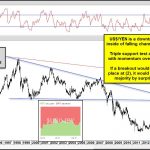It’s no secret that a house needs a strong foundation to weather storms. In a similar sense, the financial health of a pension plan depends on structural strength. The amount and timing of obligations to retirees as well as the rate of return (“ROA”) on investments are two determinants of a pension plan’s ability to meet its obligations in a timely fashion.

Trouble occurs when realized returns turn out to be significantly smaller than expected investment-related inflows and contribution levels are too low as a result. Playing catch up is hard to do once an employer realizes that a pension plan is underfunded due to anemic asset returns. That’s one of the reasons that more defined benefit plan sponsors are asking whether the historically popular annual eight percent rate still makes sense. According to Credit Suisse senior analyst David Zion, company earnings can take a serious hit if “long-term expectations for pension returns turn out to be too bullish.” (See “Are Pension Forecasts Way Too Sunny?” by Jason Zweig, Wall Street Journal, January 28, 2012).
The possible outcomes are no less dire for public pension plans. In a November 6, 2015 press release, Connecticut’s Treasurer, Denise L. Nappier, applauds recently proposed changes by Governor Malloy to better fund the nearly $30 billion Connecticut Retirement Plans & Trust Funds but warns that a drop in the assumed ROA from 8.5 percent to eight percent is not enough and that 7.5 percent or lower “would be more in line” with what can reasonably be obtained. She adds that “Clearly, it stands to reason that setting return assumptions at levels more likely to be attained will strengthen the financial health of the funds over the long term.” On October 5, 2015, the Wall Street Journal described a bleak outlook for Connecticut municipal workers without a major overhaul to how its retirement plans are funded. In “Connecticut, America’s Richest State, Has a Huge Pension Problem,” readers are told that “unfunded pension liabilities more than doubled over the past decade to $26 billion…”













Leave A Comment